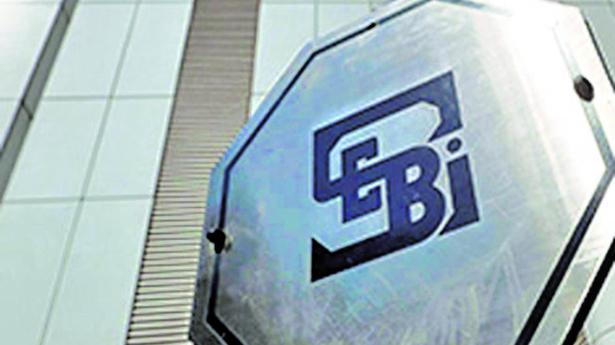
SEBI amends rules to simplify procedure for transmission of securities
The Hindu
SEBI has revised the existing threshold limit for simplified documents to ₹5 lakh from ₹2 lakh currently for securities held in physical mode per listed issuer
With an aim to simplify the procedure for transmission of securities, Securities and Exchange Board of India (SEBI) has revised the existing threshold limit for simplified documents to ₹5 lakh from ₹2 lakh currently for securities held in physical mode per listed issuer.
Also, the threshold in this regard for securities held in the dematerialised mode for each beneficiary account has been increased to ₹15 lakh from the present level of ₹5 lakh.
“Legal Heirship Certificate or its equivalent certificate issued by competent government authority will be an acceptable document for transmission of securities,” the regulator said in a notification issued on Tuesday. The objective is to ensure that uniform processes are followed by the Registrars to an Issue and Share Transfer Agents (RTAs)/listed companies, which would further ease the transmission process for investors.
To effect this, the capital markets regulator has amended SEBI's Listing Obligations and Disclosure Requirements or LODR Regulations. The move comes after the board of SEBI approved a proposal in this regard in its meeting in late March. In its notification, the regulator has also listed documentation requirements in case of transmission of securities.
In case of transmission of securities, where the securities are held in single name with nomination, SEBI said documents such as transmission request form by the nominee, original death certificate or copy of death certificate attested by the nominee and copy of Permanent Account Number (PAN) card of the nominee need to be submitted.
“In case of transmission of securities, where the securities are held in single name without nomination, documents, including a notarised affidavit from all legal heirs made on non-judicial stamp paper of appropriate value, to the effect of identification and claim of legal ownership to the securities, need to be submitted.”

The Union Budget unveiled on February 1, 2025, has come at a time of unprecedented global uncertainty and a flagging domestic economy. The real GDP growth is estimated at 6.4% for 2024-25 and between 6.3-6.8% for 2025-26, a far cry from >8 percent growth required annually to make India a developed nation by 2047. While much attention has been devoted to the demand stimulus through income tax cuts, not enough is said about the proposed reforms in urban development, tariff rationalisation, and regulatory simplification aimed at making Indian cities and corporates more competitive. Since the majority of economic activity is located in cities (urban areas account for ~55% of GDP) and produced by large corporates (~40% of the national output and 55% of India’s exports), the above-mentioned reforms have a pivotal role in improving India’s trend growth rate. Below we unpack each reform.












